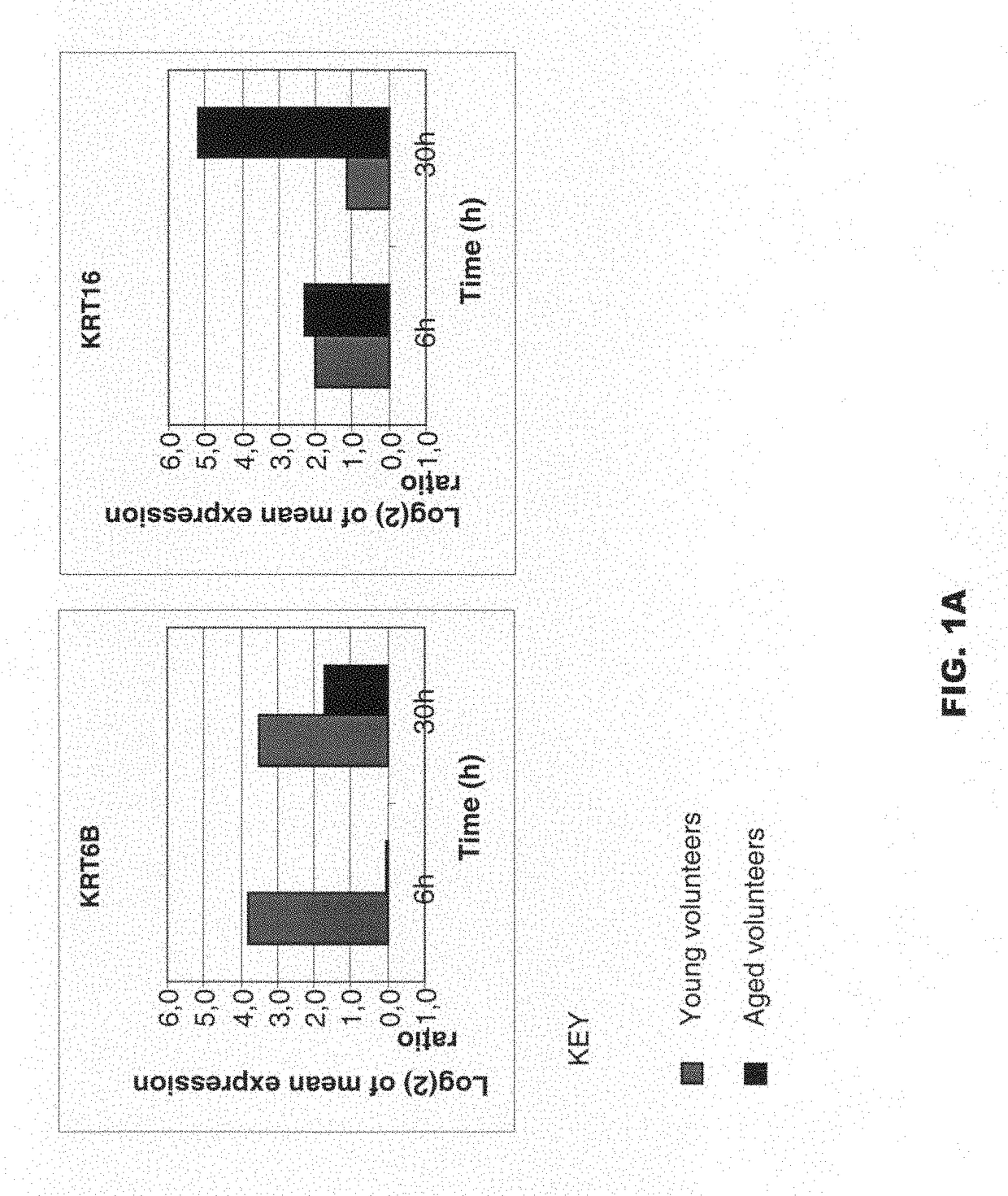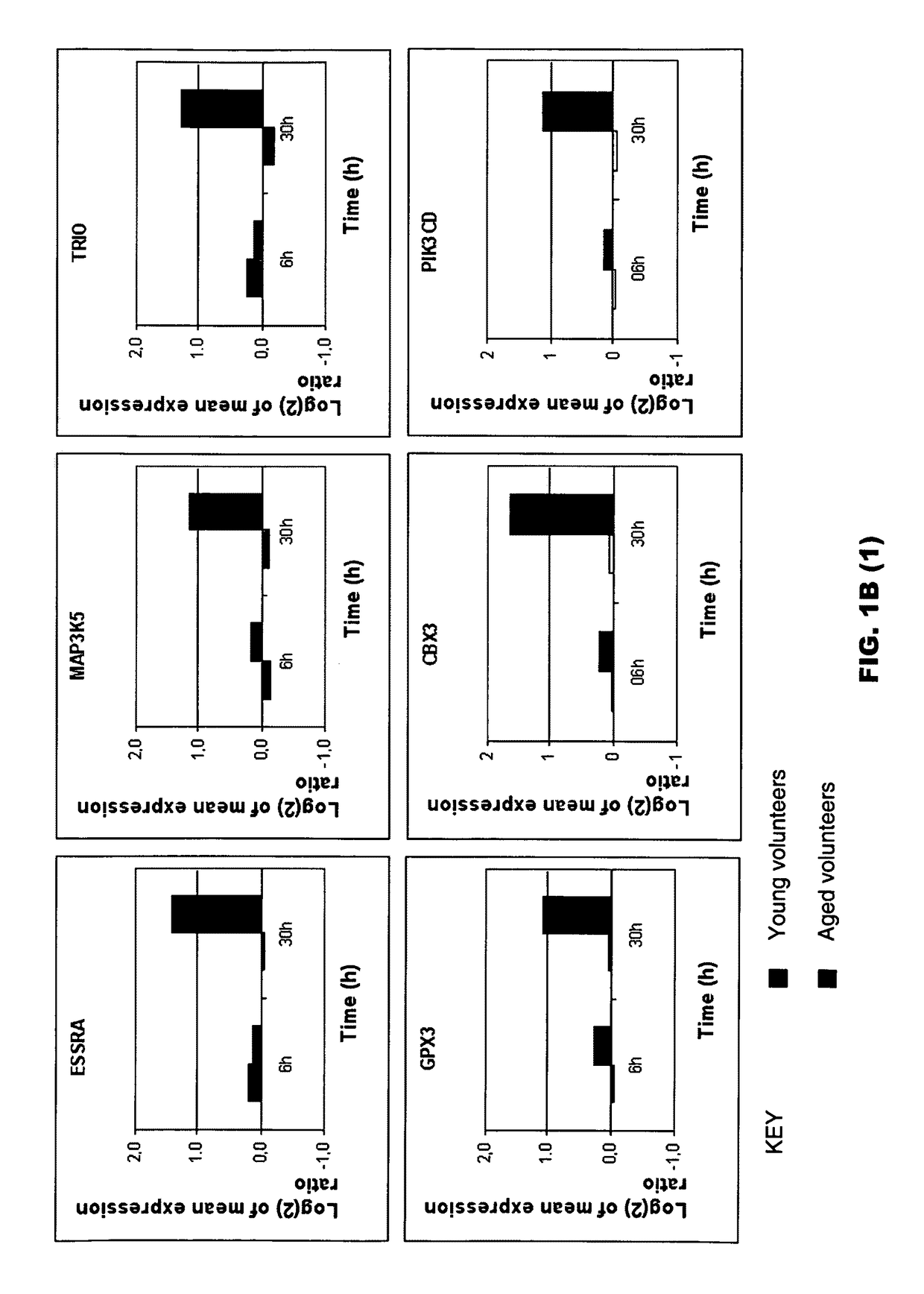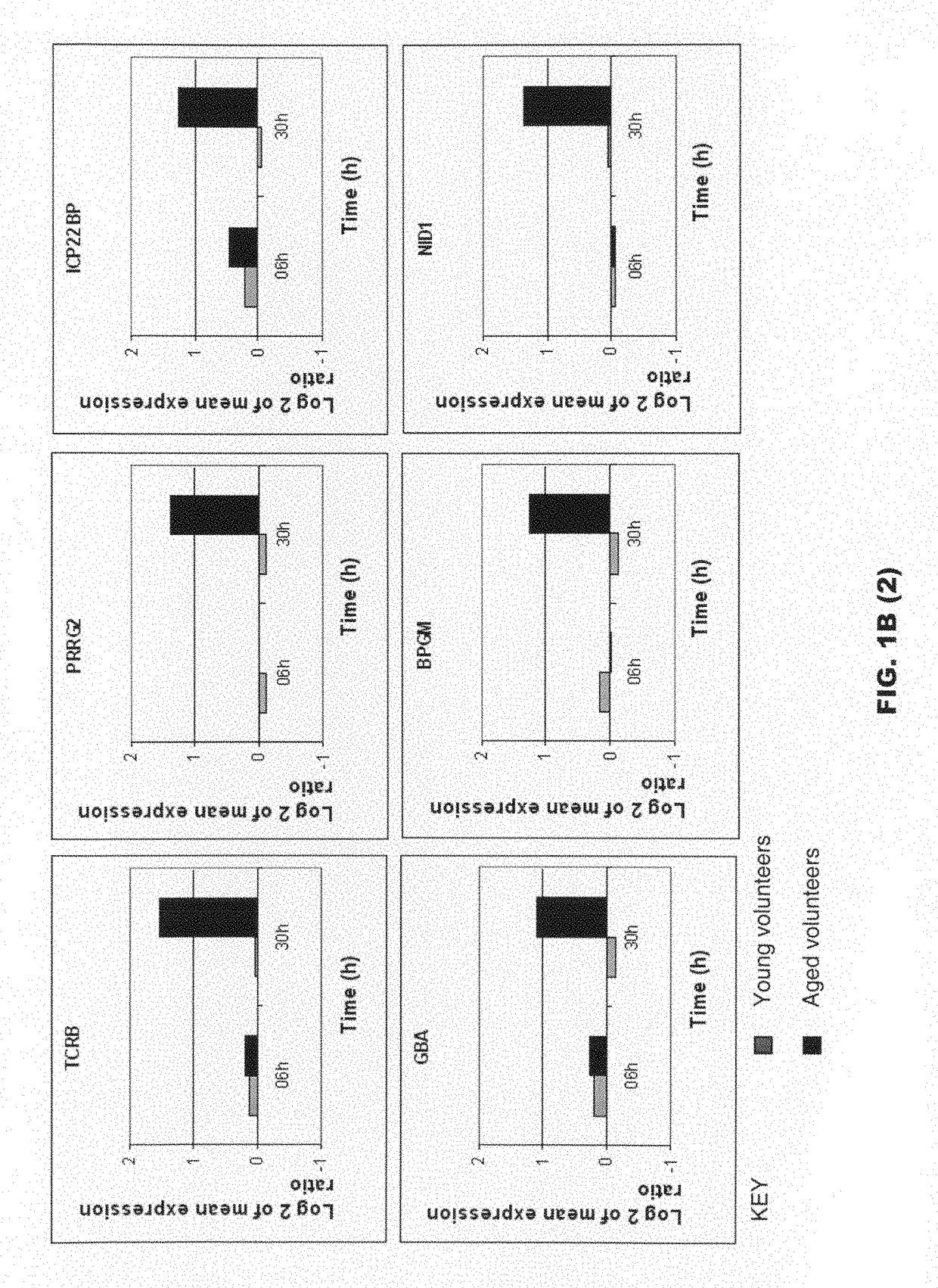Molecular signature representative of dysfunctions in epidermal homeostasis
a technology of epidermal homeostasis and molecular signature, applied in the field of cosmetics, can solve the problems of increasing water loss through the skin, limiting accuracy, and many problems of ageing peopl
- Summary
- Abstract
- Description
- Claims
- Application Information
AI Technical Summary
Benefits of technology
Problems solved by technology
Method used
Image
Examples
examples
Methodology
[0113]Healthy male volunteers were recruited in order to participate in a transcriptomic study of more than 4,000 genes which are known to be expressed in the skin.
[0114]Recruitment of volunteers: 5 groups of 6 young individuals (25±4 years) and 5 groups of 6 aged individuals (67±4 years) were recruited for this study, following the provision of informed consent.
[0115]Alteration of the stratum corneum: Tape stripping was carried out on the inner face of one of their forearms, selected in a randomized manner, until the stratum corneum had been completely removed and the skin had a smooth and shiny appearance (48±7 strips as mean). To this end, a 3M™ Blenderm™ adhesive strip was used (St Paul, Mich., USA). The second forearm did not undergo any treatment.
[0116]Epidermal samples: Epidermal samples with a surface area of 1.5 cm×1.5 cm were removed under local anesthesia using a GA360 dermatome (AESCULAP, Melsungen, Germany). The samples were taken from stripped and non-stripp...
PUM
| Property | Measurement | Unit |
|---|---|---|
| diameter | aaaaa | aaaaa |
| time | aaaaa | aaaaa |
| thickness | aaaaa | aaaaa |
Abstract
Description
Claims
Application Information
 Login to View More
Login to View More - R&D
- Intellectual Property
- Life Sciences
- Materials
- Tech Scout
- Unparalleled Data Quality
- Higher Quality Content
- 60% Fewer Hallucinations
Browse by: Latest US Patents, China's latest patents, Technical Efficacy Thesaurus, Application Domain, Technology Topic, Popular Technical Reports.
© 2025 PatSnap. All rights reserved.Legal|Privacy policy|Modern Slavery Act Transparency Statement|Sitemap|About US| Contact US: help@patsnap.com



